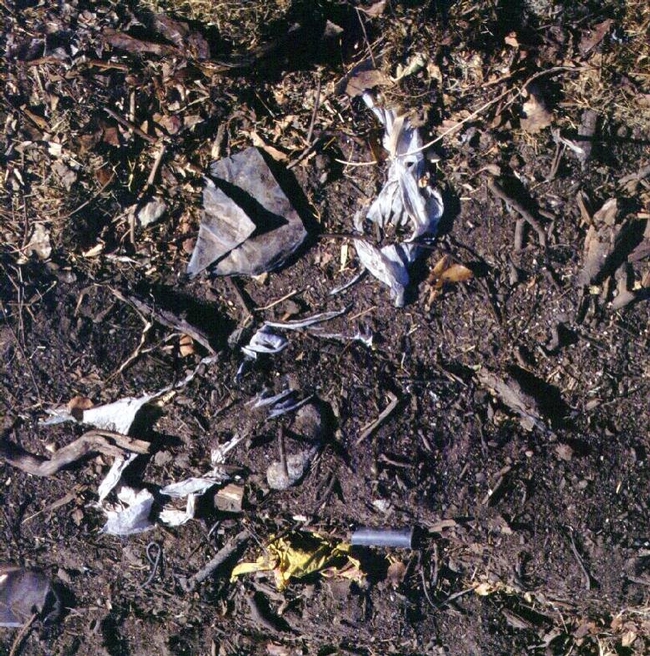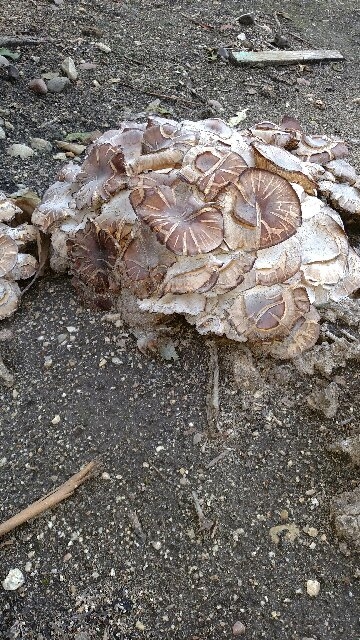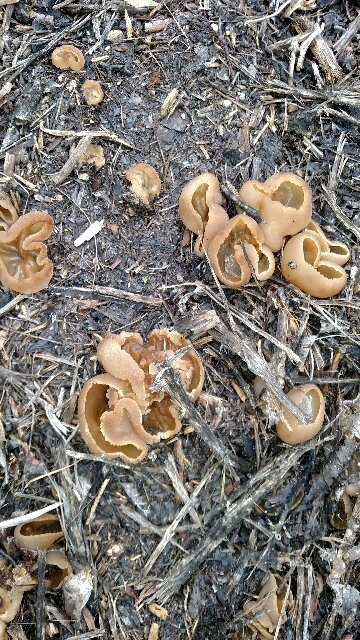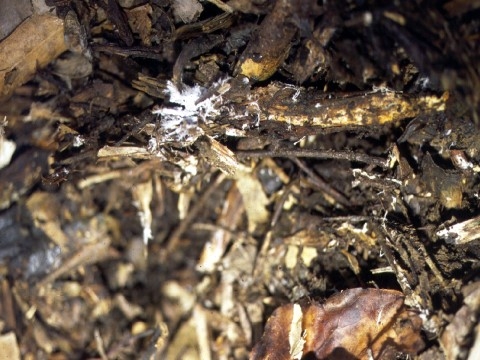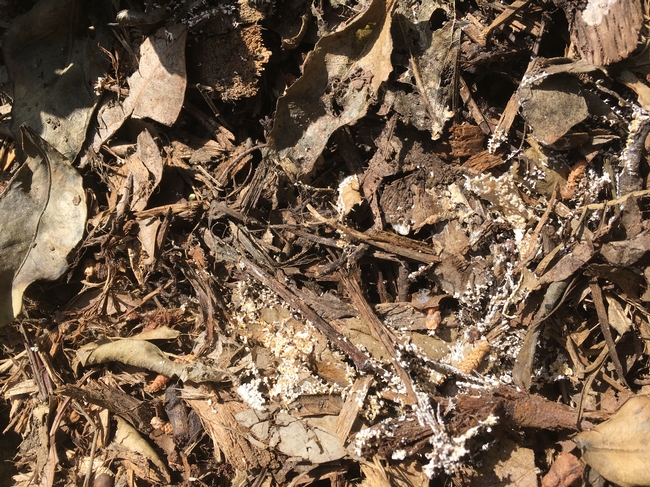
Posts Tagged: mulch
Capturing Carbon in a Lemon Orchard
In honor of #HealthySoilsWeek2020, our healthy team would like to share background and an update on our healthy soils project @Limoneira in Santa Paula. Our group of researchers and advocates at @VenturaCountyResources Conservation District @UC Cooperative Extension and @Community Environmental Council are studying the climate, water and soil impacts of @Agromin mulch and compost on a new lemon orchard.
Hoping for better days, instead of a field day this year, we hope you enjoy this video to learn more about this project. We are only about halfway through the project, so stay tuned for more results next year!
This project was funded through the Healthy Soils Project at the California Department of Food and Agriculture. CDFA's Healthy Soils Program includes 643 projects totaling more than $42.2 million in grants funds. These projects cover almost 60,000 acres and will sequester more than 112,000 metric tons of CO2e, which is equivalent to removing 24,250 cars from the road each year.

mulch
2020 Climate Action and Agriculture Symposium Proceedings
2020 Climate Action and Agriculture Symposium
Contact
Jan Gonzales
jggonzales@ucanr.edu
(858) 822-7718
Information and documents related to the 2020 Climate Action and Agriculture Symposium Webinar featuring information on current climate trends and agricultural impacts, soil health and updates about related projects in San Diego and neighboring counties.
|
Webinar Resources |
Featured Organizations and Programs:
- San Diego County Farm Bureau
- Spadra Farm, California State Polytechnic University, Pomona
- CDFA-Healthy Soils Program
- Composting Resources, County of San Diego
- Resilient Roots: Climate Smart Agriculture & Food Systems,
Climate Science Alliance - Carbon Farming, Resource Conservation District of Greater San Diego County
- Solidarity Farm
- San Diego County Food Vision 2030, San Diego Food Systems Alliance
Technical Reports and Resources:
2020 Report: Climate Change Impacts for Specialty Crops (PDF Download,70.7 MB)
by the Climate Science Alliance
Compost and Mulch Market Study, County of San Diego (PDF Download,2.1 MB)
by the County of San Diego and Hidden Resources
Mulch Resources from Ben Faber, Ph.D., UCCE Farm Advisor (PDF Download,994 KB)
Questions and comments always come up about the use of mulch in orchards. Mulch has its benefits and drawbacks and they need to recognized in order to manage it. It serves to combat erosion and root rot, but it can also burn. Mulch and wood piled up against tree trunks and near trunks can cause damage to those trunks. A Fillmore grower actually goes through the orchard with a blower to move mulch away from trunks when alerted to fire. On the other hand, irrigated orchards have been shown to be effective at suppressing fire encroaching on homes. And mulches can suppress weeds and reduce water use, but it's possible that importing material for mulch can introduce weeds.
So where to read more about fire? Check out some of the blogs from the past.
Mulch and green waste applied to orchards
- Green Waste, Yard Waste, Whatever You Call It- It has Simple Rules for Use
- A Safer Source of Inexpensive Orchard Mulch
- Avocado planting holes
- Cellulase Production by Various Sources of Mulch
- A Caution on Free "Compost/Mulch"
- A Safer Source of Inexpensive Orchard Mulch
- Mulch, Avocados and the Home Garden
- Mature Compost Does NOT Kill Phytophthora
- Use of Mulch in Organic Orchards Called into Question
Mulch and Landscapes

avocado and grapes san diego
Much Found in Mulch
Wandering around a mulched orchard is always an adventure. In the early days of commercial mulching of citrus orchards, it wasn't uncommon to come across golf balls, discarded wallets, and all kinds of things you would not want in your orchard. This can still be a problem when the grower is not watching to make sure the loads are clean.
As the material settled in, over time more commonly, there would be the evidence of the decomposers - the fungi that breakdown the organic mulch into nutrients. It would show up in the fruiting bodies, like those below
The fruiting bodies would show up, but the real activity would be in the mulch itself. The decomposition is done with enzymes that are secreted into the mulch to breakdown the lignin and cellulose that make up plant based materials. When you dig into the mulch, you find the mycelial mats of those fruiting bodies. The fungus part that actually does the enzyme secretion and nutrient absorption. These enzymes also help control disease organisms like Phytophthora.
But sometimes wandering the orchard, you come across odd things, like slime molds

And then you come across what looks like trash. At this stage of commercial mulching, it's hard to find trash in good quality mulch. Recently, I found some what looked like plastic trash in an orchard. This turns out to be a fungus, though. A stinkhorn. Another decomposer good for plants and the soil.
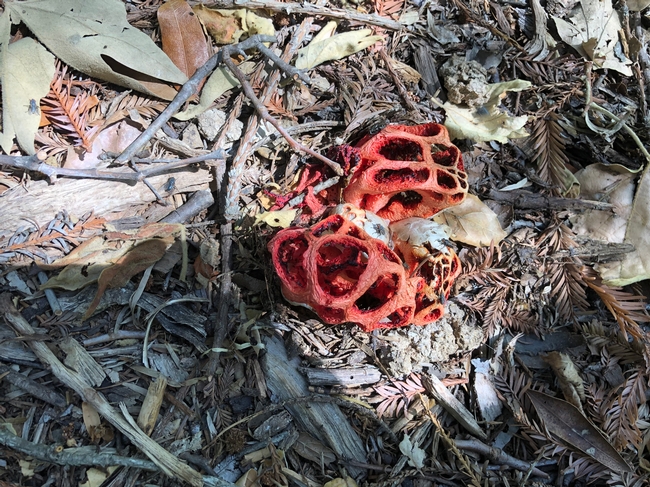
Zooming Healthy Soils Workshop
For more information on the CDFA Healthy Soils Program: Click here
Kristian M. Salgado
University California Cooperative Extension- Imperial County
Community Education Specialist 2 (CES2)
Climate Smart Agriculture
(760) 693-8938
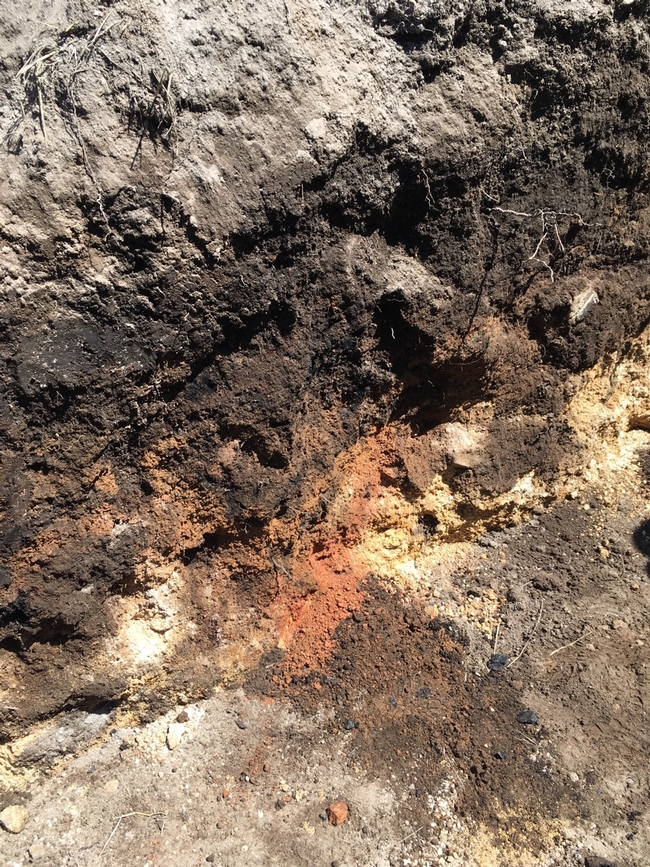
soil layers
Soil Health Symposium
Ventura County Research Symposium
Sustainability Through Soil Health
February 27, 2020
Please join us for a morning of research updates and
speakers highlighting industry trends including:
- Soil Health Assessment and Management:
- Lessons from the Arid and Semiarid Southwest
- Dr. John Idowu, Extension Agronomist & Associate Professor at New Mexico State University
- Messages from Soil Health Research
- in San Joaquin Valley
- Dr. Jeffrey P. Mitchell, CE Cropping Systems Specialist at Kearney Agricultural Research & Extension Center
Crowne Plaza Hotel 450 E Harbor Blvd Ventura, CA 93001

citrus cover crop

